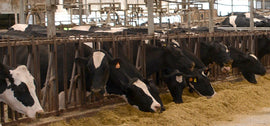This weekend I was researching bird strikes at airports and came across an article on the AOPA website. Thanks to Google alerts, I get an email for all new bird strike alerts cached in their index but for some reason, I missed this article. There has been an increased amount of news articles about bird strikes recently that I thought might be because of the movie Sully but the graph on Jim’s article appears to be the reason for an influx.
Reference Link
BIRDS A BILLION-DOLLAR HAZARD - WILDLIFE RISK RISING by Jim Moore
https://www.aopa.org/news-and-media/all-news/2016/may/23/birds-a-billion-dollar-hazard
Excerpt
Wildlife encounters increased sharply between 1990 and 2014, according to a report jointly published in August by the FAA and the U.S. Department of Agriculture. Some of that increase likely results from streamlined reporting procedures (reports have been collected online since 2001), though increases in bird populations (birds account for 97 percent of all wildlife collisions with aircraft) and other factors such as land development are also believed to play a role. The report notes an estimated $208 million in damage-related costs and losses, and 172,151 hours in aircraft downtime in 2014 for civil aircraft; the website of Bird Strike Committee USA notes an estimated total of more than $900 million in damage done in collisions between wildlife and U.S. aircraft including both military and civil operations. Worldwide, more than 250 people have been killed as a result of wildlife strikes since 1988, the organization (composed of government agencies and industry groups) notes.
Seasonal migrations from July through November increase the risk of bird strikes, most of which happen at or below 500 feet during approaches to airports. Pilots can also expect a higher probability of bird encounters when flying along the major migration routes, which are detailed in the AOPA Air Safety Institute Safety Brief on the topic. Additional information is also available from AOPA on this page.
Birds have posed a threat to aviators since the beginning of powered flight. Orville Wright was the first pilot to report a bird strike, in 1908, and Cal Rogers was the first to die following a bird strike, losing control over his Wright Flyer during a 1912 demonstration flight.
Flock Free Bird Control is currently working with the Air Force and Municipal Airports to reduce the population of birds around their runways using a variety of large scale open air bird control methods that now includes our autonomous robot line. Our company also participated in the 2016 AAAE Bird Strike Committee Meeting in Chicago.
If you have any questions or need additional information, please feel free to reach out to us on our Contact Us Page.



